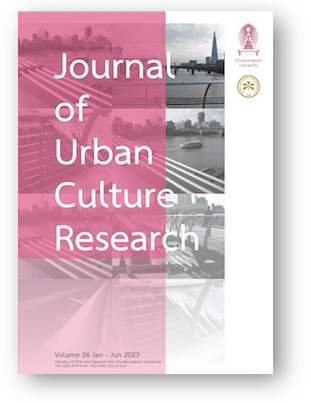Reinterpreting Performing Arts for the 21st Century in Reference to the Narai Avatara Performance
DOI:
https://doi.org/10.14456/jucr.2023.13Keywords:
Reinterpreting Performing Arts; 21st century; Narai Avatara Performance; Dance-Drama; ThailandAbstract
This article aims to share insights gained about how traditional arts and heritage can be reinterpreted through creative performing arts to keep them vibrant in 21st century urban life. Drawn from a dissertation length piece of research: ‘Reinterpreting Performing Arts for the 21st Century in Reference to the Narai Avatara Performance.’ The practice-based research on which this article is based was conducted in the context of selected urban areas in Thailand, like Bangkok, by using six methods: research literature, personal experience, field study, media, symposium, and interviews. Data collection was carried out from December 1996 through April 2022. Interviews were conducted with performing arts professionals, scholars and Thai & foreign audiences. The data was evaluated via a hexagonal analysis model developed specifically for this project. This research advances the main research proposition: Provision of a model of the creative process for reinterpreting dance as part of heritage interpretation for the 21st century and how to use dance as part of arts reinterpretation to keep Thai arts alive in urbanized areas. This research found the model of using original text and mural painting sources, together with blending of techniques derived from different cultures to help emphasize the magical, facilitated the use of different elements which make the performance more spectacular, with costumes adapted, while maintaining a flavor of the traditional aesthetic, and allowed the dancers complete freedom of movement.
Downloads
Published
How to Cite
Issue
Section
License

This work is licensed under a Creative Commons Attribution-NonCommercial-NoDerivatives 4.0 International License.
Authors authorize the JUCR to publish their materials both in print and online while retaining their full individual copyright. The copyright of JUCR volumes is retained by Chulalongkorn University.
The views and opinions expressed herein are those of the individual author(s) and do not necessarily reflect the policies or opinions of the Journal (JUCR), it editors and staff, Chulalongkorn University, or Osaka Metropolitan University.








